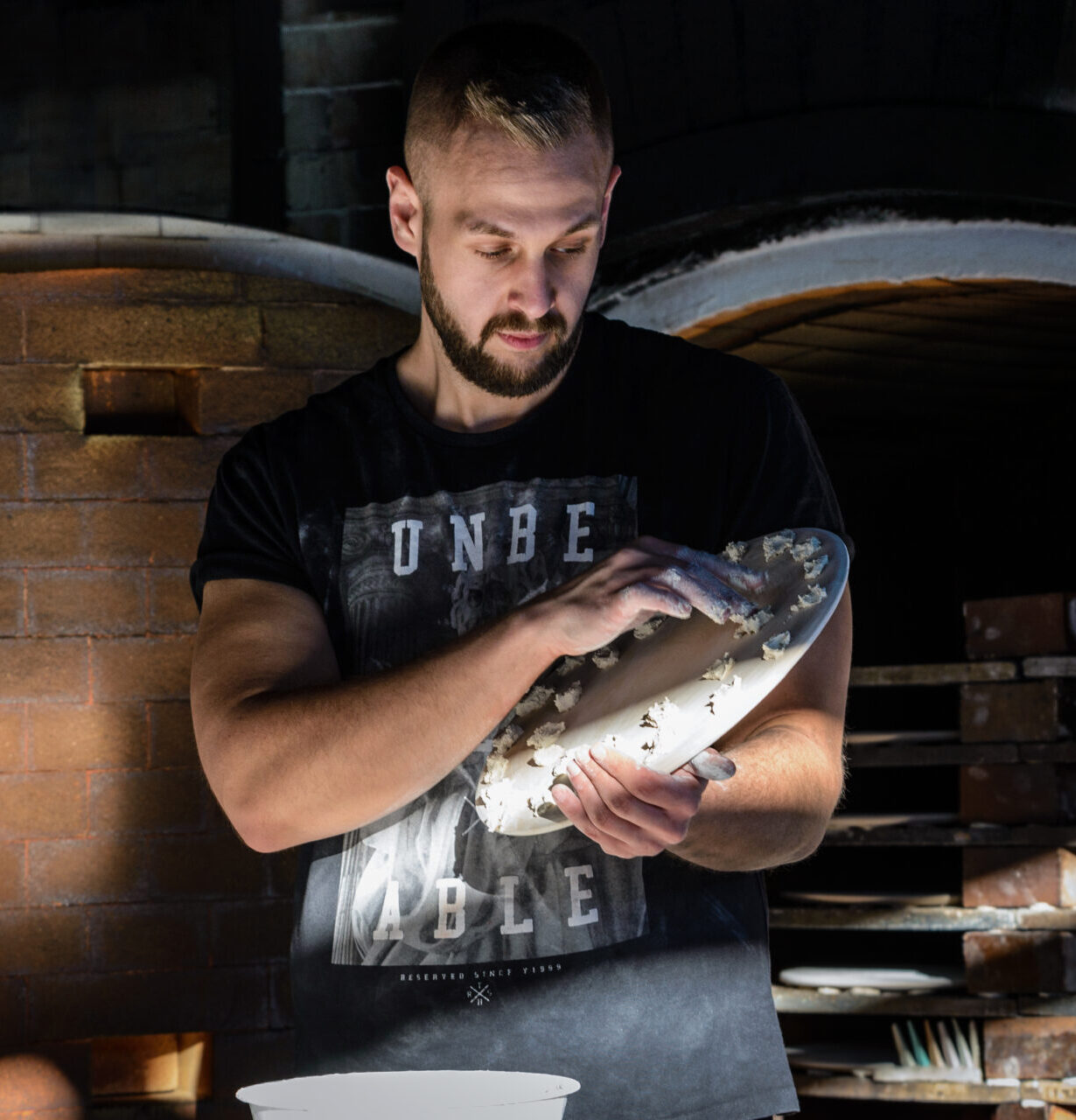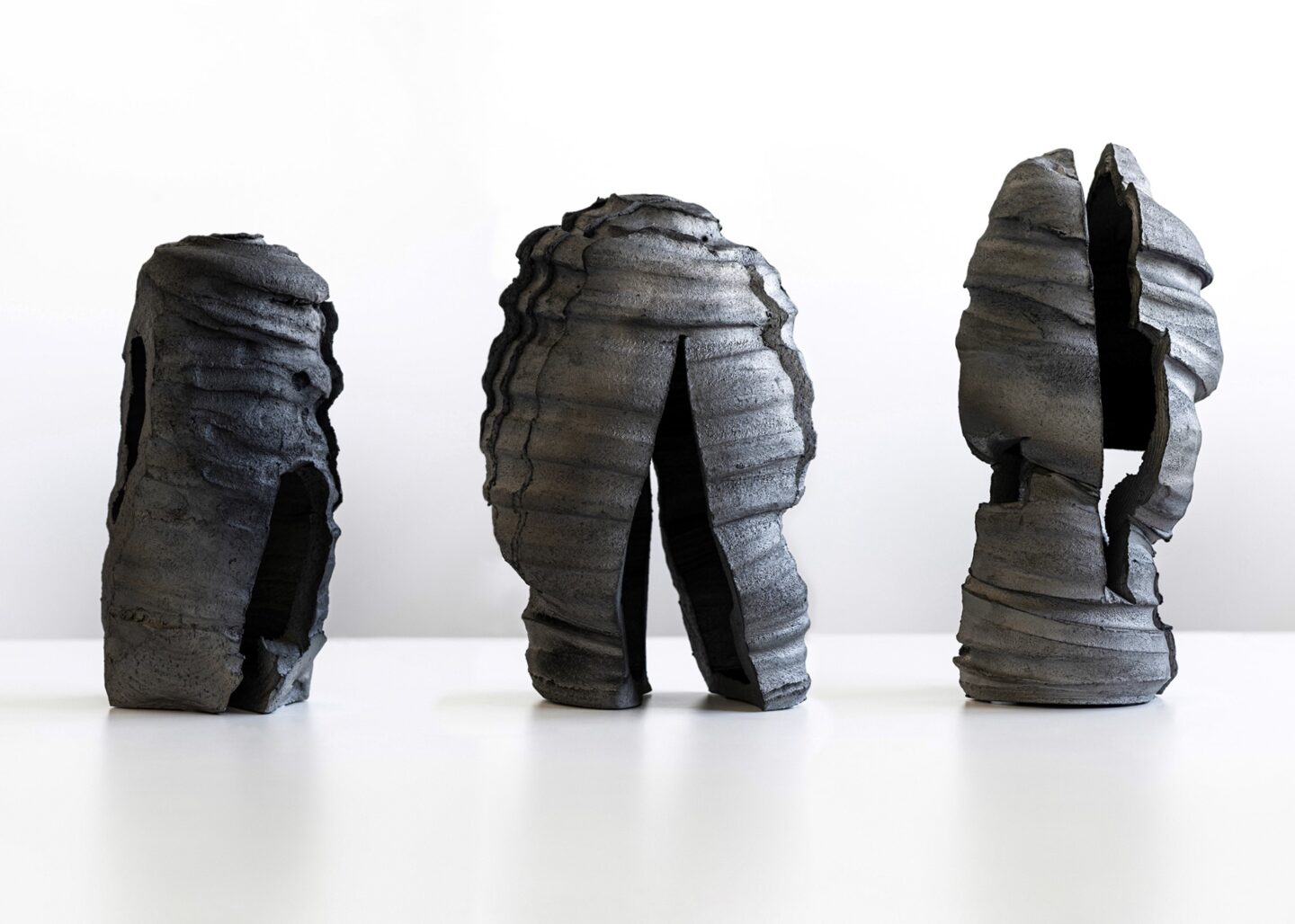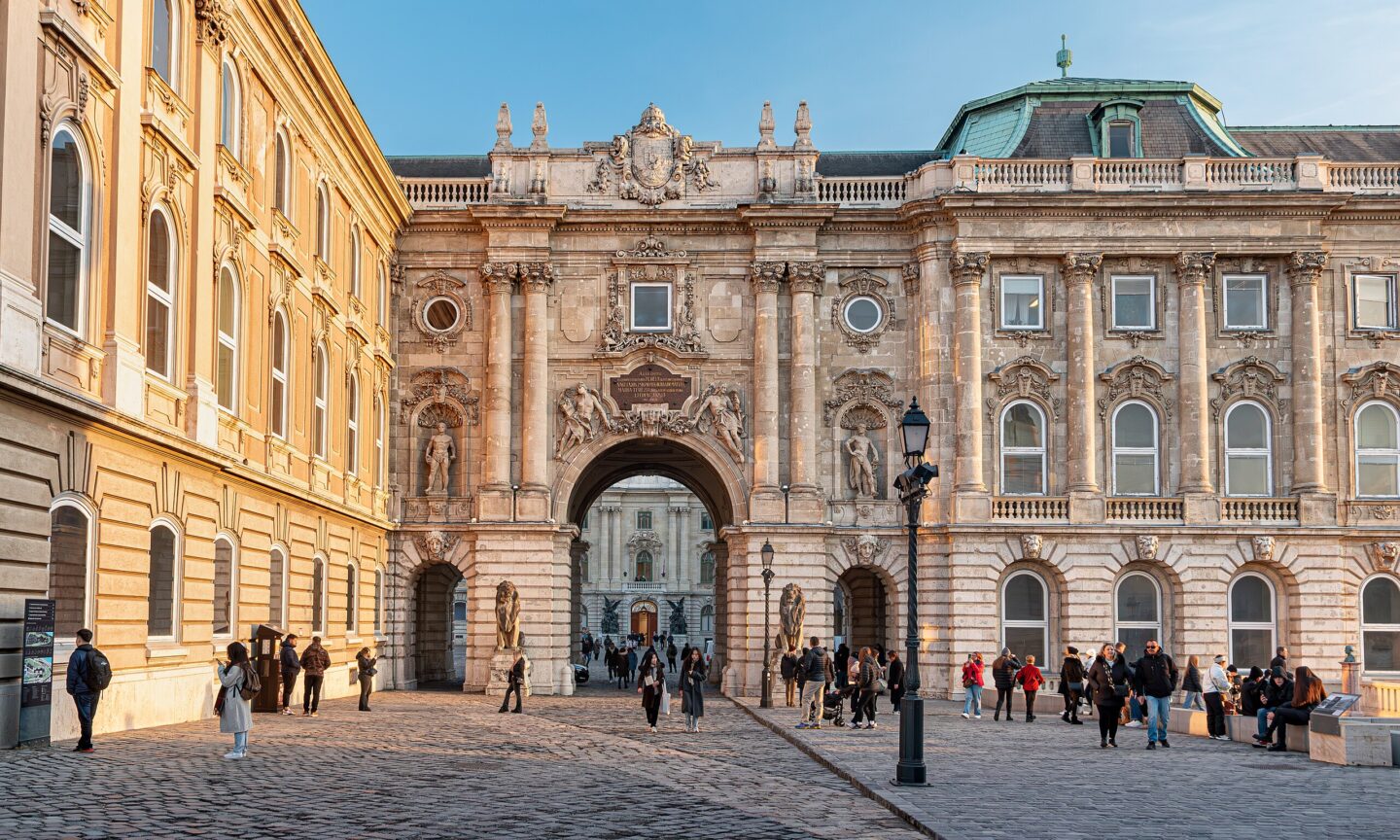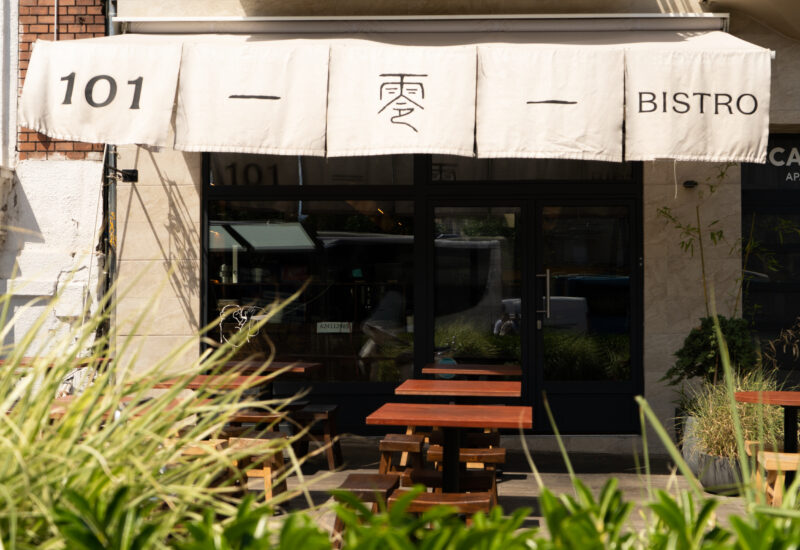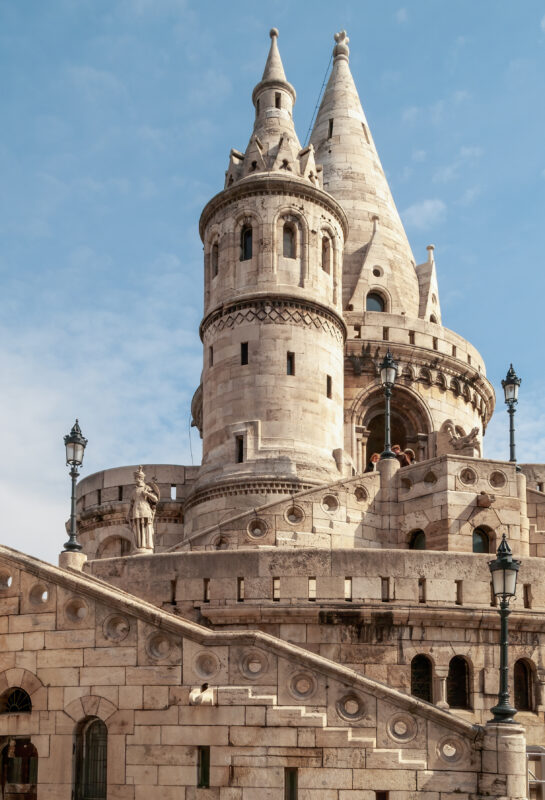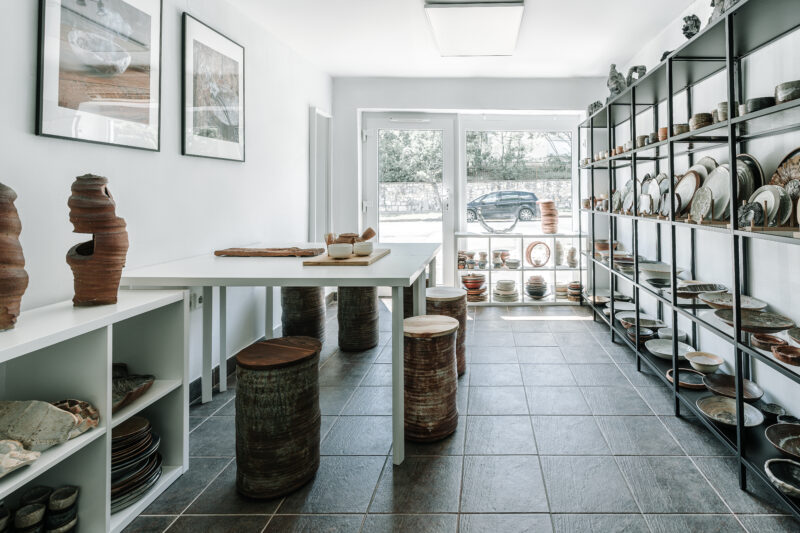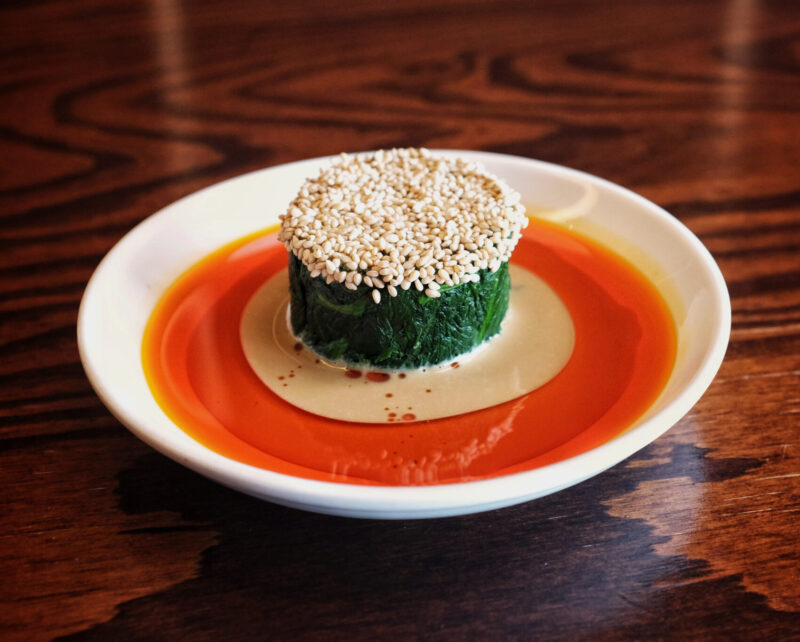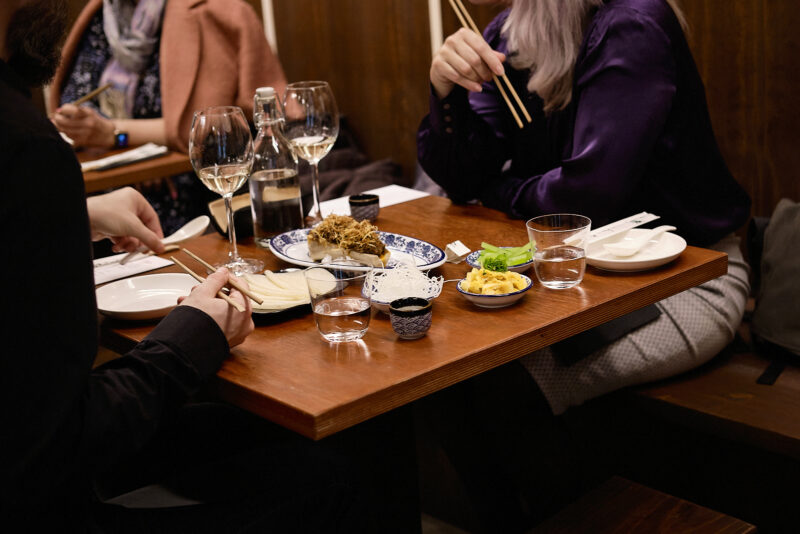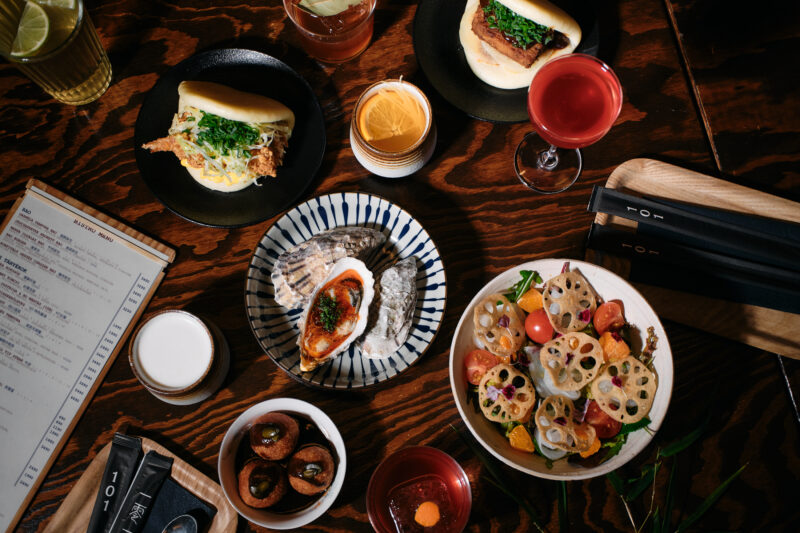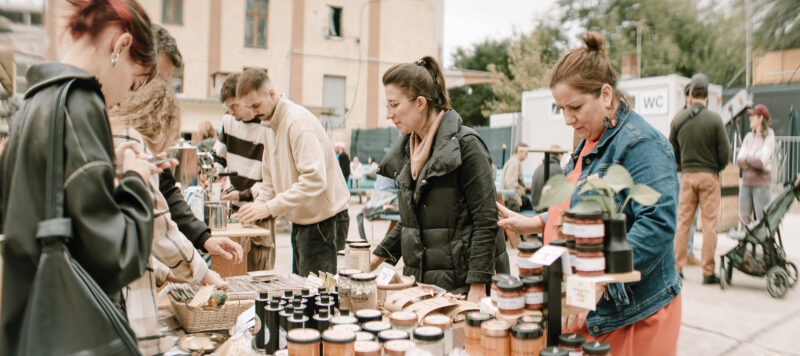Dark greys, deep charcoals, and subtle clay hues: Ádám Szabó’s ceramics captivate with their raw, earthy textures and muted, smoky tones that evoke natural landscapes. His surfaces often carry a rugged, organic feel, shaped by expressive wire-clay carving and high-temperature wood-firing techniques that embrace unpredictability and “errors” as part of the creative process.
One of the most fascinating aspects of Szabó’s work is his collaboration with Michelin-starred kitchens, where he creates unfired clay plates that serve as temporary culinary vessels. After the dining experience, these plates return to the earth, closing a poetic cycle between creation, consumption, and nature. This blending of art, design, and ecological mindfulness positions Szabó’s practice at the intersection of tradition and innovation.
© Courtesy of the artist
Which place do you currently call home and where do you work on your projects?
I live in Budapest district IX. Ferencváros. My studio is in the district XI. Kelenföld and my showroom is at district II. Törökvész.
Do you have a favourite place in your area where you like to relax and linger?
Close to my studio is the Kopaszi-gát, which is a relatively new part of Budapest and is even less known by tourists. A small bay with spacious green surfaces, restaurants, cafes and water sports opportunities. Unfortunately, it is perhaps the only place in the center of Budapest where we can actually get close to the Danube and enjoy its benefits.
© Jorge Franganillo, Budapest Buda Castle (54204580022), CC BY 2.0
Are there any urgent political issues or problems in your region?
Currently, the resignation of the President of the Republic due to a pardon case has brought up the issues of child protection and the penalties for pedophilia. Another huge topic at the moment is the issue of the authorization of active euthanasia. Still, perhaps the biggest political problem is that the contradictions due to political divisions appear in everyday life and strongly polarized society. Instead of serving us, politics divides us more and more each passing day.
In your opinion, what has developed well in the last 5 years – and what has not?
The development of the Liget Budapest project was extremely successful. The functional rethinking of the city park and the renovation of its spaces added a lot to the city’s everyday life. I would highlight the new Museum of Ethnography and my personal favorite, the House of Hungarian Music designed by Sou Fujimoto, which reacts with incredible finesse to the environment of the city park.
One of the most poorly managed developments is also part of this project. The completed building of the Pannon Park Biodom has been empty for almost two years due to political battles. The 50,000 square meter building was designed to evoke the former wildlife of the Carpathian Basin. The period of the recent geohistorical past, when this region was still much warmer, and was populated by fauna and flora reminiscent of today’s tropical and subtropical landscapes. The exciting idea is currently a distortion, without a true function, it only consumes additional financial resources and it is not really possible to see a solution to the problem in the near future.
Do you know a hidden gem when it comes to local manufacturers – whether it’s arts and crafts, sustainable products or food?
Every Sunday morning, PANCS gastroplacc is a great farmer’s market in the district IX. In addition to high-quality products and food, visiting the market is also an opportunity for great conversation with the manufacturers. Maker’s Market Budapest is a craft and design fair where you can meet the latest Hungarian creators on a monthly basis at locations that change according to the season.
© Maker’s Market
Is there anything particularly innovative in your region? Also in comparison to other places you have already visited?
Feasible public transport during night in Budapest. In many big cities, I have experienced that public transport is not really an option if you are going home from a party or your plane leaves early. But public transport throughout Budapest is excellent 24/7.
Do you have a secret restaurant tip you would like to share with us?
Tati and 101 Bistro in Budapest and Natura Hill in Zebegény.
© 101 Bistro
Is there a local shop whose products are only available in your region?
Le Parfum is a Luxury Concept Boutique, which, in addition to the world’s most beautiful niche perfumes, awaits you with the most unique ambiance scents, artisan masterpieces of perfume making. Books that can be bought and borrowed. Moreover, there are perfume workshops happening.
What are your 3 favourite apps that you couldn’t live without?
– BudapestGO for public transport.
– Simple for parking and tickets.
– Wolt for food delivery.
Do you have any favourite newspapers or online magazines? And how do you keep up to date with politics or social and cultural issues?
I’m following the news mostly online and from social media.
– telex
– 24
– index
Imagine you could be mayor for a year – what would you change?
I would create more opportunities for people to connect with the Danube. Currently, in most places in the city center, the river is squeezed between two roads. As the mayor, perhaps the first thing I would do be filling these roads with trees and people.
© Reinhold Möller, Budapest Fisherman’s Bastion-20080321-RM-102153, CC BY-SA 4.0
Last question: If you could choose anywhere else – regardless of financial or time constraints – where would you like to live?
Coming from a landlocked country, I have always been attracted to the ocean coast. So I could easily imagine to live in Peniche in Portugal.
© Courtesy of the artist
